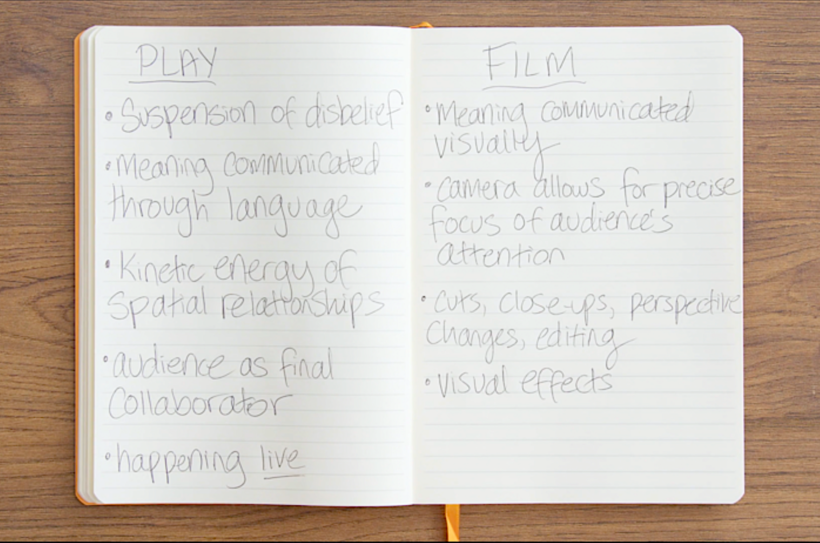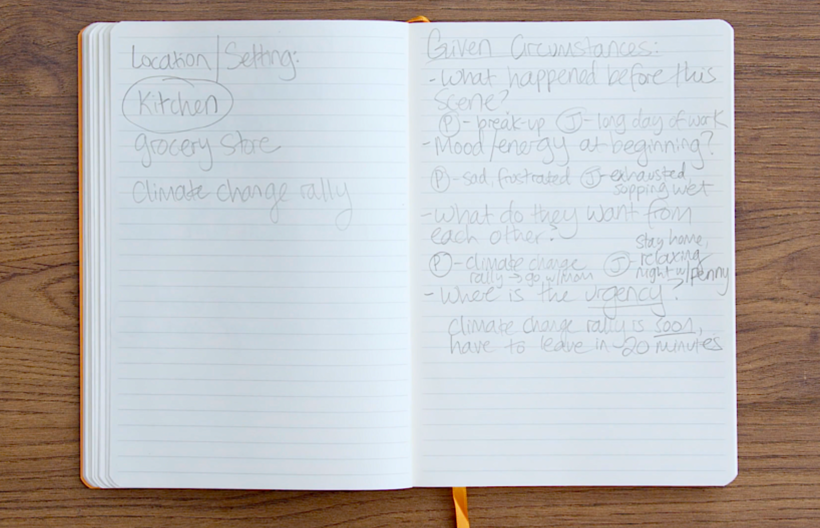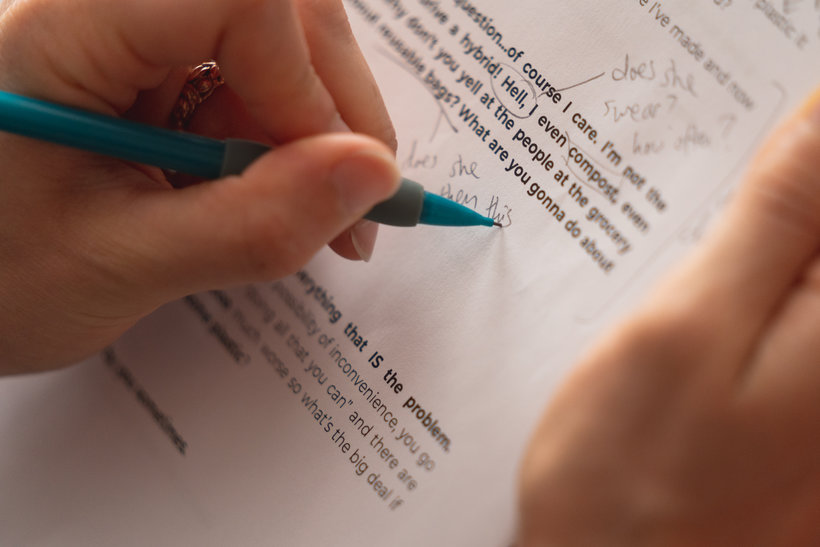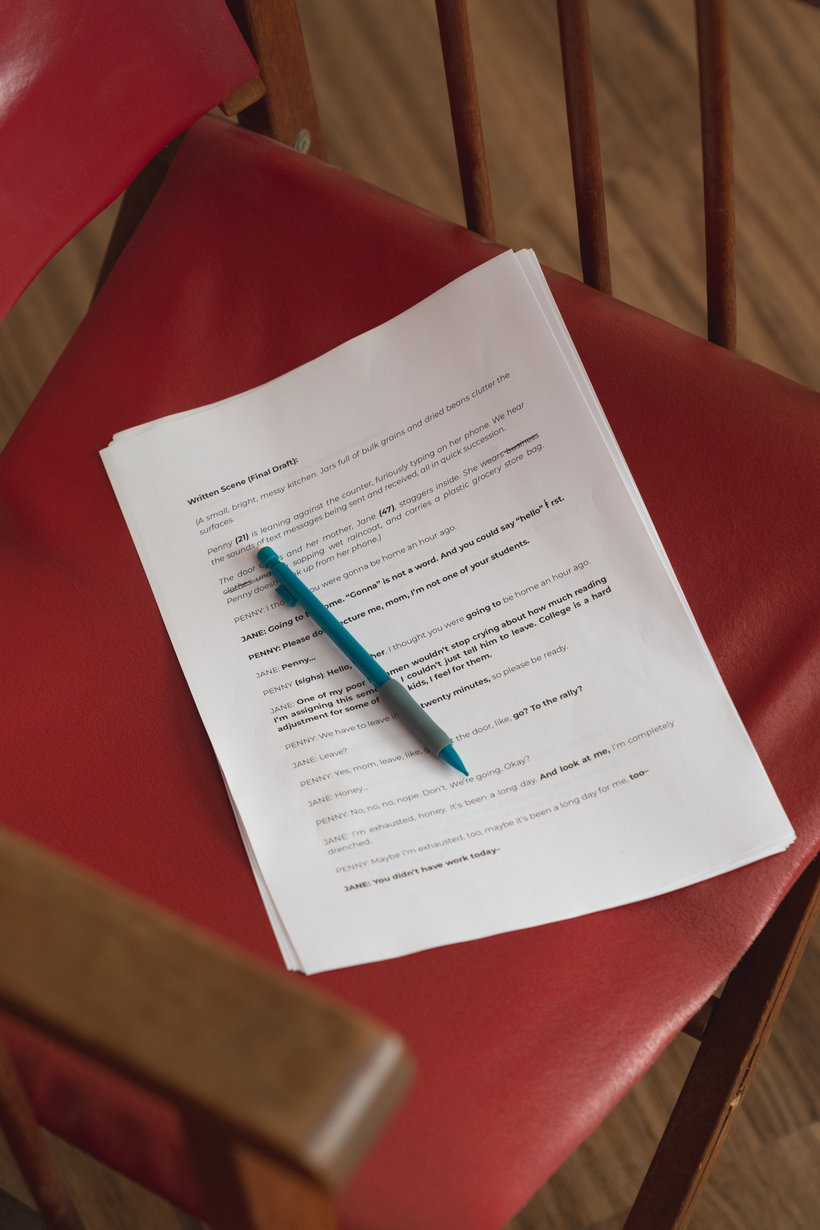Creative Writing for Film and Theater
Course final project
A course by Gina Stevensen , Scriptwriter, Actor, and Dramaturge
About the final project for: Creative Writing for Film and Theater
Creative Writing for Film and Theater
“Congratulations! You have reached the end of this Domestika course. It has been a genuine joy sharing my knowledge and experience with you. Thank you so much. I sincerely hope you have enjoyed the course. Now I'd like to remind you of some of the most important steps we took during the course that you should remember when doing your course project: The Central Dramatic Question Every script has a central dramatic question at its core; a question that drives not only the plot and characters but is a sort of thematic North Star—something that ties the story together and can help the writer stay on track. Take a few minutes to brainstorm a question you are excited about and think about what you would like to write.






Partial transcription of the video
“Now we've reached the end of this course. Thank you so much for joining me on this journey. I hope you've enjoyed it as much as I have. Before you go, I'd like to leave you with some final thoughts. First of all, writing should be fun. I don't know if I've said that yet, but here it is. Writing should be fun. And at the same time, it can be really, really easy to find so many excuses not to write. It can be so easy to get into our own heads or to stop ourselves before we even begin, and to convince yourself that your writing is bad or that nobody will want to listen to it and that you have ...”
This transcript is automatically generated, so it may contain mistakes.
Course summary for: Creative Writing for Film and Theater
-
Category
Writing -
Areas
Communication, Creative Writing, Script

Gina Stevensen
A course by Gina Stevensen
Gina Stevensen is a scriptwriter, actor, and writing instructor passionate about creating meaningful and character-driven narratives for theater and film. After exploring the world of the performing arts in her early years, she went on to study theater at NYU Tisch and playwriting at Columbia University. She has developed numerous performance pieces that have graced stages all across the US and England while simultaneously navigating the world of film with projects for HBO Max, BMW, and more.
Gina was the 2021 winner of the Kernodle New Play Award and the 2020 winner of the New Works Initiative. Her TV pilot “Summerland” was a finalist at the 2021 Big Apple Film Festival, as well as a semifinalist at the 2021 NYC International Screenplay Contest and the Reno-Tahoe Screenplay Contest. She has also served as a guest lecturer at the University of Arkansas, NYU, and Hunter College, and has taught screenwriting workshops in collaboration with The Writer's Rock, Tribeca Performing Arts Center, and more.
- 98% positive reviews (57)
- 3,634 students
- 13 lessons (2h 16m)
- 29 additional resources (16 files)
- Online and at your own pace
- Available on the app
- Audio: English, Spanish (Latam), French, Italian, Portuguese, Turkish
- Spanish · English · Portuguese · German · French · Italian · Polish · Dutch · Turkish
- Level: Beginner
- Unlimited access forever
Category
Areas

